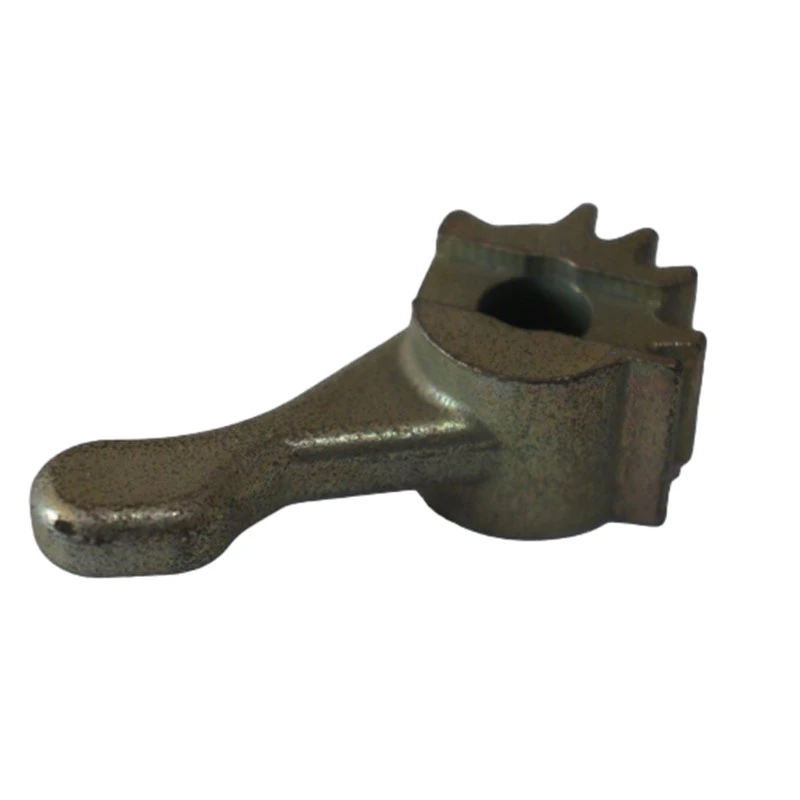aluminum investment casting process
The Aluminum Investment Casting Process
Aluminum investment casting, also known as lost-wax casting, is a sophisticated manufacturing process that enables the production of complex and high-precision metal parts. This technique has gained popularity across various industries, including aerospace, automotive, and medical, due to its ability to produce intricate designs with excellent dimensional accuracy and surface finish. Understanding the aluminum investment casting process involves exploring its steps, benefits, applications, and considerations.
The Process Steps
The aluminum investment casting process involves several key steps
1. Pattern Creation The process begins with creating a precise wax or thermoplastic pattern of the desired part. This pattern replicates the exact dimensions and features of the final product. The wax pattern can be made using traditional methods or advanced 3D printing technologies.
2. Shell Building Once the pattern is ready, it is coated with a ceramic material to create a shell. This coating is achieved by dipping the wax pattern in a liquid ceramic slurry and then sprinkling fine sand on it. This step may be repeated multiple times to build a shell of sufficient thickness and strength to withstand the casting process.
3. Wax Removal After the shell has hardened, the wax is removed through a process called dewaxing. This can be accomplished using heat or steam, which melts and drains away the wax, leaving behind a hollow ceramic shell that mirrors the exact external shape of the desired aluminum part.
4. Preheating the Shell The empty, pre-heated shell is then subjected to a high-temperature oven. Preheating serves multiple purposes, including ensuring that the aluminum flows smoothly into the mold and aiding in the removal of any residual wax.
5. Casting Once the shell is adequately preheated, molten aluminum is poured into it. The molten metal fills the cavity of the shell, taking the form of the intricate design of the original pattern. This step requires precision and control of temperature to ensure the aluminum pours correctly and captures all details.
6. Cooling and Shell Removal After the aluminum cools and solidifies, the ceramic shell is broken away, revealing the cast aluminum part. The shell can be removed mechanically or through chemical processes.
7. Finishing Finally, the new aluminum part undergoes various finishing processes, including trimming, grinding, and polishing, to achieve the desired surface finish and dimensional tolerances.
aluminum investment casting process

Benefits of Aluminum Investment Casting
Aluminum investment casting offers numerous advantages
- Complex Geometries The ability to produce intricate designs that would be challenging or impossible with other manufacturing processes makes investment casting ideal for complex components. - High Precision This method provides excellent dimensional accuracy, reducing the need for extensive machining and secondary operations.
- Smooth Surface Finish The ceramic shell produces a smooth finish, which minimizes post-casting finishing, saving both time and costs.
- Material Efficiency Investment casting effectively reduces waste material, as almost all the aluminum used in the process is converted into the final product.
- Versatility This method can be used to cast a wide range of aluminum alloys, each offering specific mechanical and physical properties tailored to various applications.
Applications of Aluminum Investment Casting
Aluminum investment casting is widely utilized across several sectors. In aerospace, it is used to manufacture components where weight reduction and structural integrity are critical. Automotive manufacturers leverage this technique for producing engine components and transmission cases that benefit from complex designs and lightweight materials. Additionally, the medical industry utilizes investment casting for precision instruments and equipment that require strict adherence to dimensional tolerances and hygiene standards.
Considerations
While the aluminum investment casting process offers many advantages, it also presents challenges. The initial setup costs can be high due to tooling and pattern making. Moreover, the process is best suited for lower production volumes since setup times can be lengthy. Continuous advancements in technology, however, are addressing these challenges, making investment casting more accessible and efficient.
In conclusion, the aluminum investment casting process is a vital manufacturing technique that balances complexity and precision. It holds a prominent position in modern manufacturing due to its ability to produce high-quality components that meet the demanding standards of various industries. As technology continues to evolve, the applications and capabilities of aluminum investment casting are poised to expand even further.
-
Crawler Drilling Rig - Baoding Hairun|Confined Space Drilling&Mine SafetyNewsAug.15,2025
-
Drill For Confined Spaces-Crawler Mounted Drill Rig | Crawler Drill Rig for SaleNewsAug.15,2025
-
Premium OEM Auto Parts & Stamping - Reliable ManufacturersNewsAug.15,2025
-
Crawler Drilling Rig for Confined Spaces-Baoding Hairun MachineryNewsAug.15,2025
-
Drill For Confined Spaces - Baoding Hairun Machinery And Equipment Trading Co., Ltd.NewsAug.15,2025
-
Advanced Crawler Drilling Rig - Baoding Hairun Machinery | Underground Mining SolutionsNewsAug.14,2025















